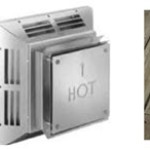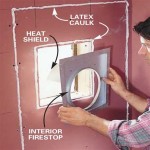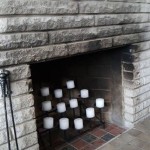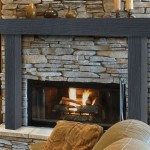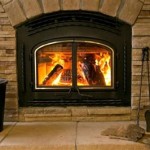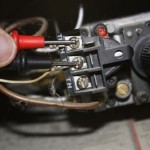Electric Fireplaces: A Comprehensive Overview
Electric fireplaces have emerged as a popular alternative to traditional wood-burning fireplaces, offering a blend of aesthetics, convenience, and efficiency. This article provides a detailed examination of electric fireplaces, exploring their functionalities, advantages, types, installation considerations, and maintenance requirements.
At their core, electric fireplaces are heating appliances that simulate the look and feel of a traditional fireplace. They achieve this primarily through the use of electric resistance heating elements and carefully designed visual displays. The heating element converts electrical energy into heat, which is then distributed into the room via a fan or convection system. The visual display, often employing LED technology, creates a realistic flame effect, mimicking the flickering of real flames.
The appeal of electric fireplaces stems from a multitude of factors. Unlike wood-burning fireplaces, they require no venting or chimney, making them suitable for a wider range of homes and apartments. They eliminate the need for firewood, reducing both the physical labor and storage space associated with traditional fireplaces. Furthermore, electric fireplaces offer precise temperature control, allowing users to adjust the heat output to their comfort level. They also present a safer option, as they eliminate the risks of carbon monoxide poisoning and stray embers. The realistic flame effects can often be enjoyed independently of the heat, thus making the fireplace a year-round aesthetic addition to the home.
The technological advancements in electric fireplaces have significantly improved the realism and efficiency of these units. Early models often featured rudimentary flame effects, relying on simple rotating mirrors and colored lights. Modern electric fireplaces, however, utilize sophisticated LED displays, holographic projections, and even vaporized water to create remarkably realistic and captivating flame simulations. Many models also incorporate features such as adjustable flame speed, brightness, and color, allowing users to customize the visual display to their preferences.
Key Point 1: Functionality and Heating Efficiency
The primary function of an electric fireplace is to provide supplemental heat to a room. The heating capacity is typically measured in British Thermal Units (BTUs) or watts. Most electric fireplaces are designed to heat a room ranging from 400 to 1,000 square feet. The actual heating efficiency depends on factors such as the insulation of the room, the ambient temperature, and the settings of the fireplace. Electric fireplaces are generally considered more energy-efficient than wood-burning fireplaces, as they convert nearly 100% of the electrical energy into heat, with minimal heat loss through a chimney or venting system.
The heating elements within an electric fireplace typically consist of coiled resistance wires, similar to those found in electric space heaters. When electricity flows through these wires, they heat up, producing radiant heat. A fan or blower is then used to circulate the heated air into the room. Some models utilize infrared heating technology, which directly heats objects and people in the room, rather than heating the air itself.
Many electric fireplaces come equipped with a thermostat, which allows users to set a desired room temperature. The fireplace will then automatically turn on and off to maintain the set temperature. This feature helps to prevent overheating and conserves energy. Some models also include a timer, which allows users to program the fireplace to turn on or off at specific times.
It is important to note that electric fireplaces are primarily designed for supplemental heating. They are not typically intended to be the primary source of heat for an entire home. However, they can be an effective and efficient way to warm a specific room or area, especially during colder months.
Key Point 2: Types and Styles of Electric Fireplaces
Electric fireplaces are available in a wide variety of types and styles, catering to diverse aesthetic preferences and spatial constraints. These can be broadly categorized into the following types:
Wall-Mounted Electric Fireplaces: These fireplaces are designed to be mounted directly on a wall, similar to a flat-screen television. They are typically sleek and modern in design, and they can be easily installed in almost any room. Wall-mounted electric fireplaces often feature a thin profile, making them a good choice for smaller spaces.
Insert Electric Fireplaces: Insert electric fireplaces are designed to be inserted into an existing fireplace opening. They provide a convenient way to convert a traditional wood-burning fireplace into an electric fireplace, without the need for extensive renovations. Insert fireplaces are available in various sizes to fit different fireplace openings.
Freestanding Electric Fireplaces: Freestanding electric fireplaces are self-contained units that can be placed on the floor or on a stand. They are typically portable and can be easily moved from one room to another. Freestanding electric fireplaces are available in a wide range of styles, from traditional to contemporary.
Mantel Electric Fireplaces: Mantel electric fireplaces combine an electric fireplace insert with a decorative mantel. The mantel provides a traditional fireplace look, and it can be customized to match the décor of the room. Mantel electric fireplaces are available in various styles and materials, such as wood, stone, and metal.
Electric Fireplace Stoves: These resemble traditional wood-burning stoves with a realistic flame effect. They provide a rustic aesthetic and are often more compact than other types of electric fireplaces, making them suitable for smaller spaces.
Beyond these primary types, electric fireplaces can also be classified based on their visual display technology, heating mechanism, and additional features. The choice of fireplace type depends on factors such as the available space, the desired aesthetic, and the budget.
Key Point 3: Installation, Maintenance, and Safety Considerations
The installation of an electric fireplace is generally straightforward, especially compared to traditional wood-burning fireplaces. Most electric fireplaces simply require plugging into a standard electrical outlet. However, it is important to ensure that the outlet is properly grounded and that the electrical circuit is capable of handling the power load of the fireplace.
For wall-mounted electric fireplaces, drilling and mounting hardware are typically required. It is crucial to follow the manufacturer's instructions carefully to ensure that the fireplace is securely mounted to the wall. For insert electric fireplaces, the unit should be sized to fit snugly within the existing fireplace opening. Adequate clearance should be provided around the fireplace to allow for proper ventilation.
Maintenance of electric fireplaces is relatively minimal. The primary maintenance task is to periodically clean the fireplace to remove dust and debris. The exterior of the fireplace can be cleaned with a soft cloth and mild detergent. The glass screen, if present, can be cleaned with a glass cleaner. It is important to avoid spraying cleaning products directly onto the electrical components of the fireplace.
The LED bulbs or lighting elements that create the flame effect may eventually need to be replaced. The lifespan of these bulbs varies depending on the model and usage. Replacement bulbs can typically be purchased from the manufacturer or from a specialized appliance store.
Safety is a paramount concern when operating any electrical appliance, including electric fireplaces. It is crucial to follow these safety precautions:
* Never leave an electric fireplace unattended while it is in operation. * Keep flammable materials, such as curtains and furniture, away from the fireplace. * Do not cover the fireplace or obstruct the airflow around it. * Do not use the fireplace in a bathroom or other damp environment. * If the fireplace is damaged or malfunctioning, disconnect it from the power supply and contact a qualified technician for repair. * Ensure that the electrical outlet is properly grounded and that the electrical circuit is capable of handling the power load of the fireplace. * Never use an extension cord with an electric fireplace, as this can overload the circuit and create a fire hazard.By adhering to these safety precautions, users can safely enjoy the warmth and ambiance of an electric fireplace without compromising their well-being.

Hearth Home Simplifire Scion 55 Inch Built In Linear Electric Fireplace Sf Sc55 Bk Modern Fireplaces Depot

Remii Wm Slim 55 Extra Smart Indoor Wall Mount Electric Fireplace With Black Steel Surround Inch

55 Scion Linear Electric Fireplace Sf Sc55 Bk The

Remii 55 Inch Extra Tall Built In Indoor Outdoor Electric Fireplace Heater 102755 Xt Fireplaces Depot

Remii Wm Slim 55 Electric Fireplace Fireplaces Usa

Real Flame Harlan Grand 55 In Electric Fireplace White 8060e W The Home Depot

Superior Erl2055 55 Electric Fireplace Mpe 55s Fireplaces Usa

Remii Wm Slim 55 Electric Fireplace Fireplaces Usa

Carmaux 55 Electric Fireplace Suites White

Real Flame Harlan Grand 55 In Electric Fireplace White 8060e W The Home Depot
Related Posts

